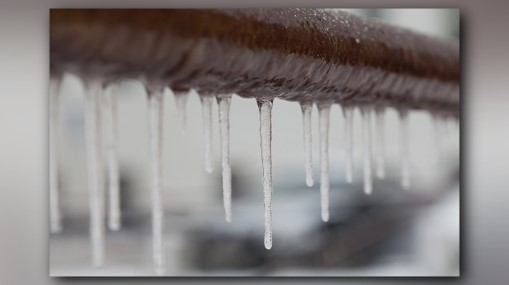Shielding Your Pipes from Freezing Issues: Critical Strategies
Shielding Your Pipes from Freezing Issues: Critical Strategies
Blog Article
What're your opinions about How to Prevent Your Pipes From Freezing?

Winter can ruin your pipes, particularly by freezing pipes. Right here's just how to stop it from taking place and what to do if it does.
Introduction
As temperatures drop, the risk of frozen pipes increases, possibly leading to costly repairs and water damages. Understanding just how to avoid icy pipes is crucial for house owners in cold environments.
Prevention Tips
Insulating prone pipelines
Wrap pipelines in insulation sleeves or utilize warm tape to secure them from freezing temperature levels. Focus on pipes in unheated or outside areas of the home.
Heating strategies
Maintain interior spaces appropriately heated up, especially locations with plumbing. Open up closet doors to enable cozy air to circulate around pipelines under sinks.
Just how to determine icy pipelines
Search for reduced water circulation from faucets, unusual smells or sounds from pipelines, and visible frost on exposed pipes.
Long-Term Solutions
Architectural changes
Consider rerouting pipes away from exterior walls or unheated areas. Add additional insulation to attics, basements, and crawl spaces.
Upgrading insulation
Purchase top notch insulation for pipelines, attic rooms, and walls. Appropriate insulation assists maintain constant temperatures and reduces the risk of icy pipelines.
Safeguarding Exterior Plumbing
Garden pipes and exterior faucets
Detach and drain pipes yard hoses before wintertime. Mount frost-proof faucets or cover outdoor faucets with protected caps.
Comprehending Icy Pipes
What causes pipelines to ice up?
Pipelines freeze when revealed to temperature levels below 32 ° F (0 ° C) for extended durations. As water inside the pipes ices up, it broadens, taxing the pipe wall surfaces and potentially creating them to burst.
Dangers and problems
Icy pipes can cause water supply interruptions, home damages, and costly fixings. Burst pipes can flood homes and cause comprehensive structural damage.
Signs of Frozen Pipeline
Determining frozen pipes early can prevent them from breaking.
What to Do If Your Pipelines Freeze
Immediate activities to take
If you think frozen pipelines, keep taps available to relieve stress as the ice melts. Make use of a hairdryer or towels soaked in warm water to thaw pipes gradually.
Conclusion
Stopping frozen pipes requires proactive steps and quick responses. By understanding the reasons, indicators, and safety nets, house owners can secure their plumbing during winter.
6 Proven Ways to Prevent Frozen Pipes and Protect Your Home
Disconnect and Drain Garden Hoses
Before winter arrives, start by disconnecting your garden hoses and draining any remaining water. Close the shut-off valves that supply outdoor hose bibs and leave the outdoor faucet open to allow any residual water to drain. For extra protection, consider using faucet covers throughout the colder months. It’s also important to drain water from any sprinkler supply lines following the manufacturer’s directions.
Insulate Exposed Pipes
Insulating your pipes is an effective way to prevent freezing. Pipe insulation is readily available at home improvement stores and is relatively inexpensive. Pay close attention to pipes in unheated areas such as the attic, basement, crawl spaces, or garage. Apply foam insulation generously to create a buffer against the cold. You can also wrap your pipes in heat tape or thermostat-controlled heat cables for added warmth.
Seal Air Leaks
Inspect your home for any cracks or openings that could let in cold air. Seal any holes around the piping in interior or exterior walls, as well as the sill plates where your home rests on its foundation. Additionally, make sure to keep your garage door closed unless you’re entering or exiting. Leaving it open creates a significant air leak that can lead to frozen pipes.
Allow Warm Air Circulation
During cold snaps, it’s essential to allow warm air to circulate evenly throughout your home. Leave interior doors ajar to promote better airflow. Open kitchen and bathroom cabinets to help distribute heat consistently around the rooms. If you have small children or pets, be sure to remove any household chemicals or potentially harmful cleaners from open cabinets for safety.
Let Faucets Drip
A small trickle of water can make a big difference in preventing ice formation inside your pipes. When temperatures drop significantly, start a drip of water from all faucets served by exposed pipes. This continuous flow helps prevent the water from freezing. Additionally, running a few faucets slightly can relieve pressure inside the pipes, reducing the chances of a rupture if the water inside does freeze.
https://choateshvac.com/6-proven-ways-to-prevent-frozen-pipes-and-protect-your-home/

We hope you enjoyed our topic about How To Avoid Freezing Pipes. Many thanks for taking time to browse our blog. Are you aware of anybody else who is inquisitive about the subject? Feel free to share it. Thanks so much for your time spent reading it.
Phone Report this page